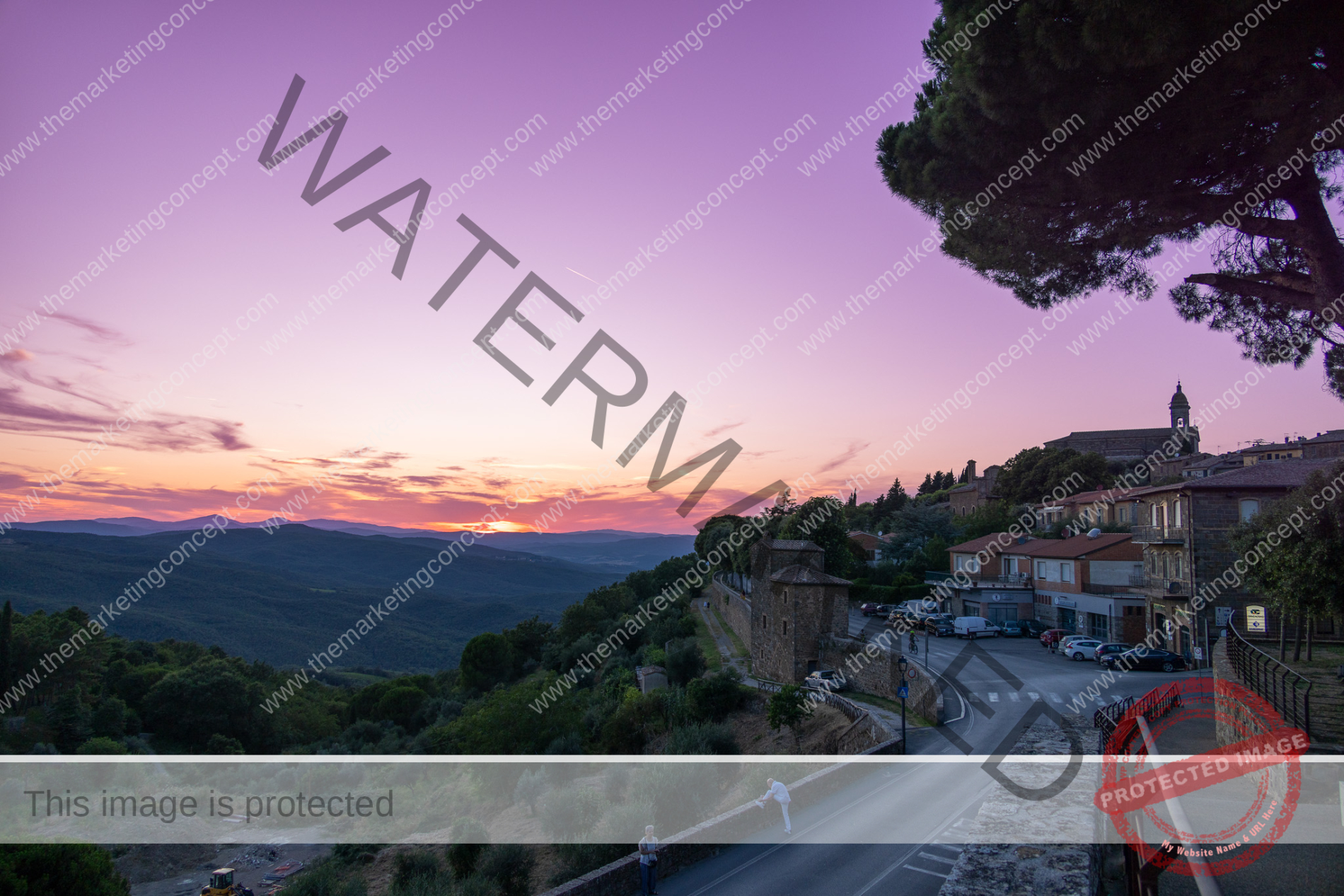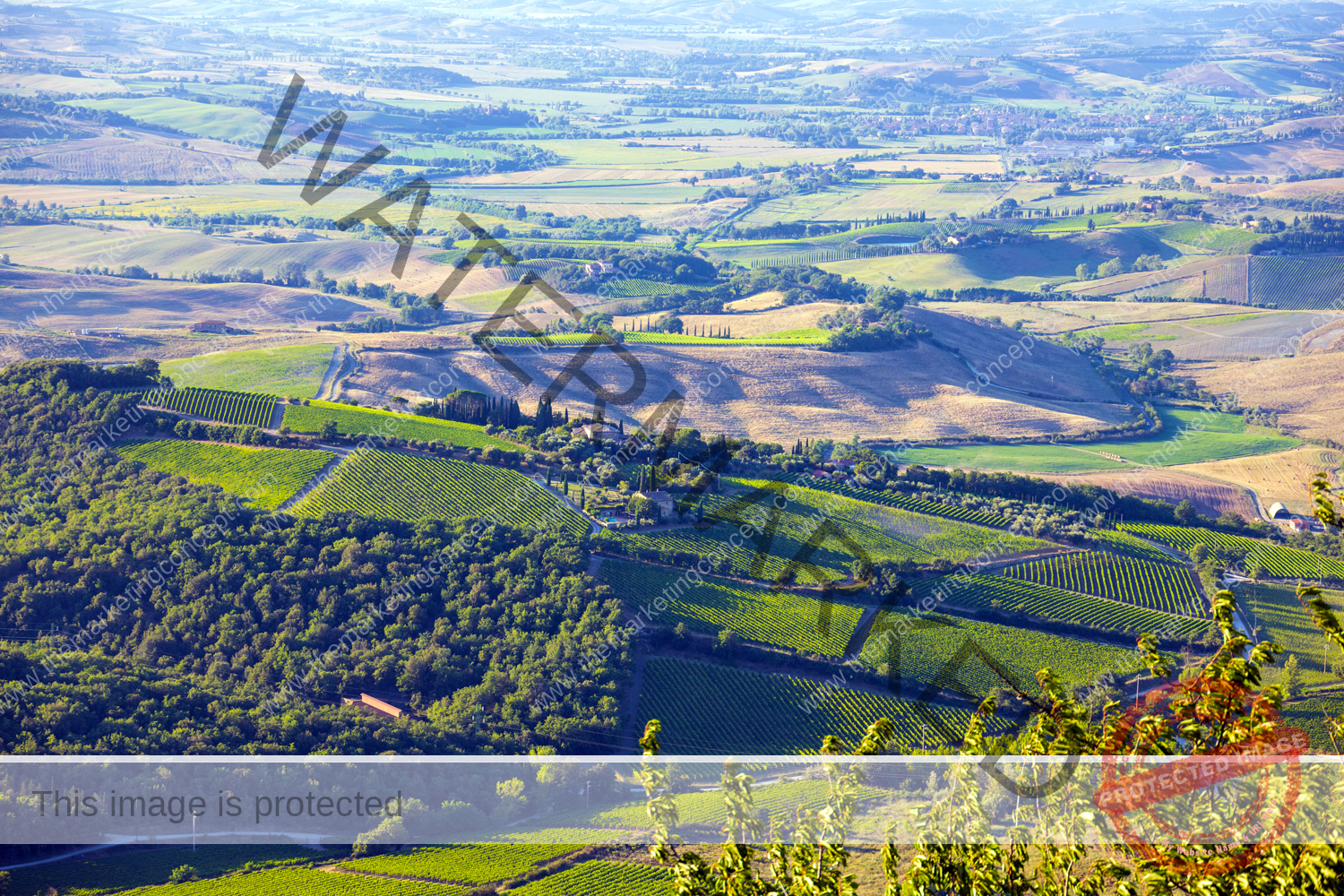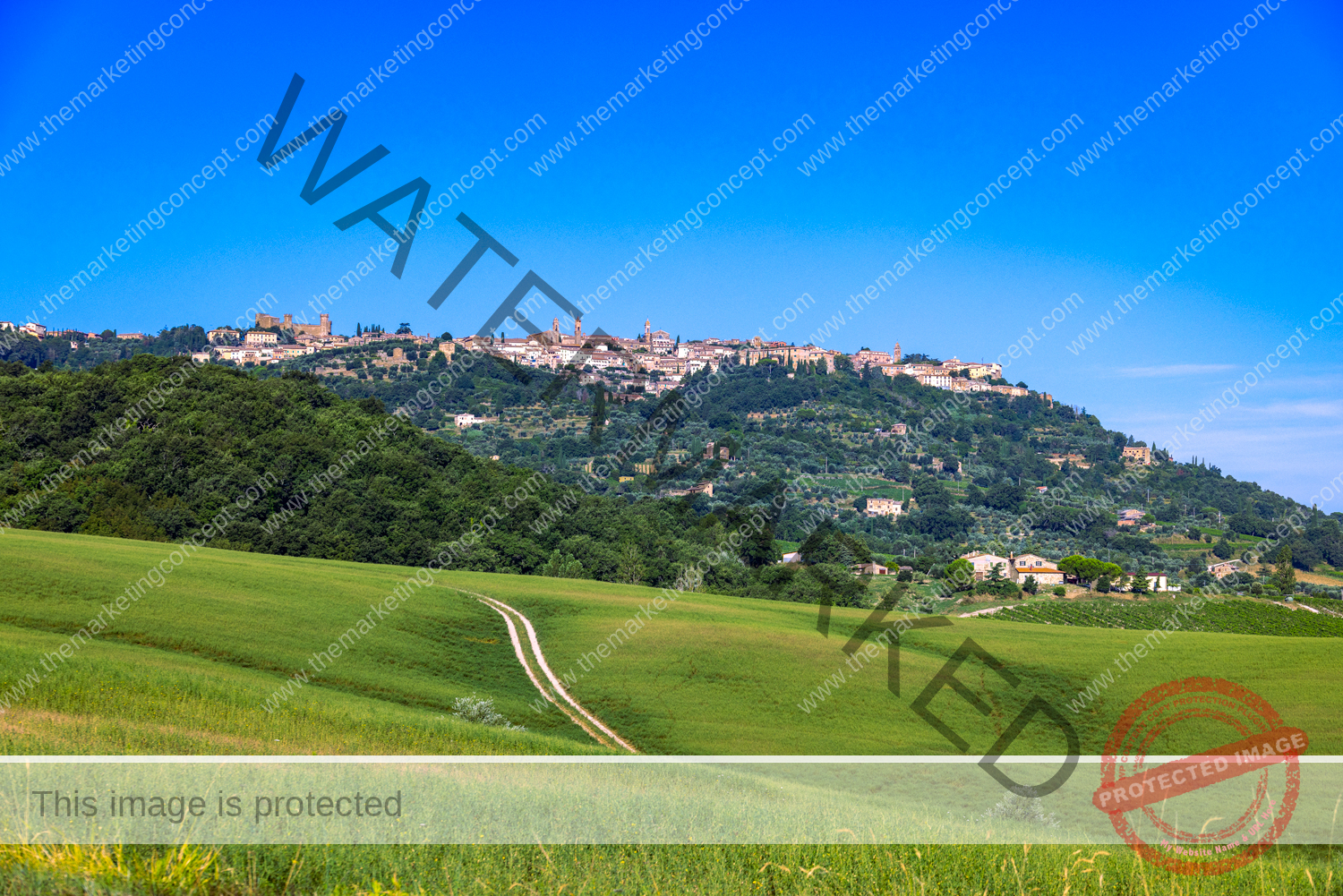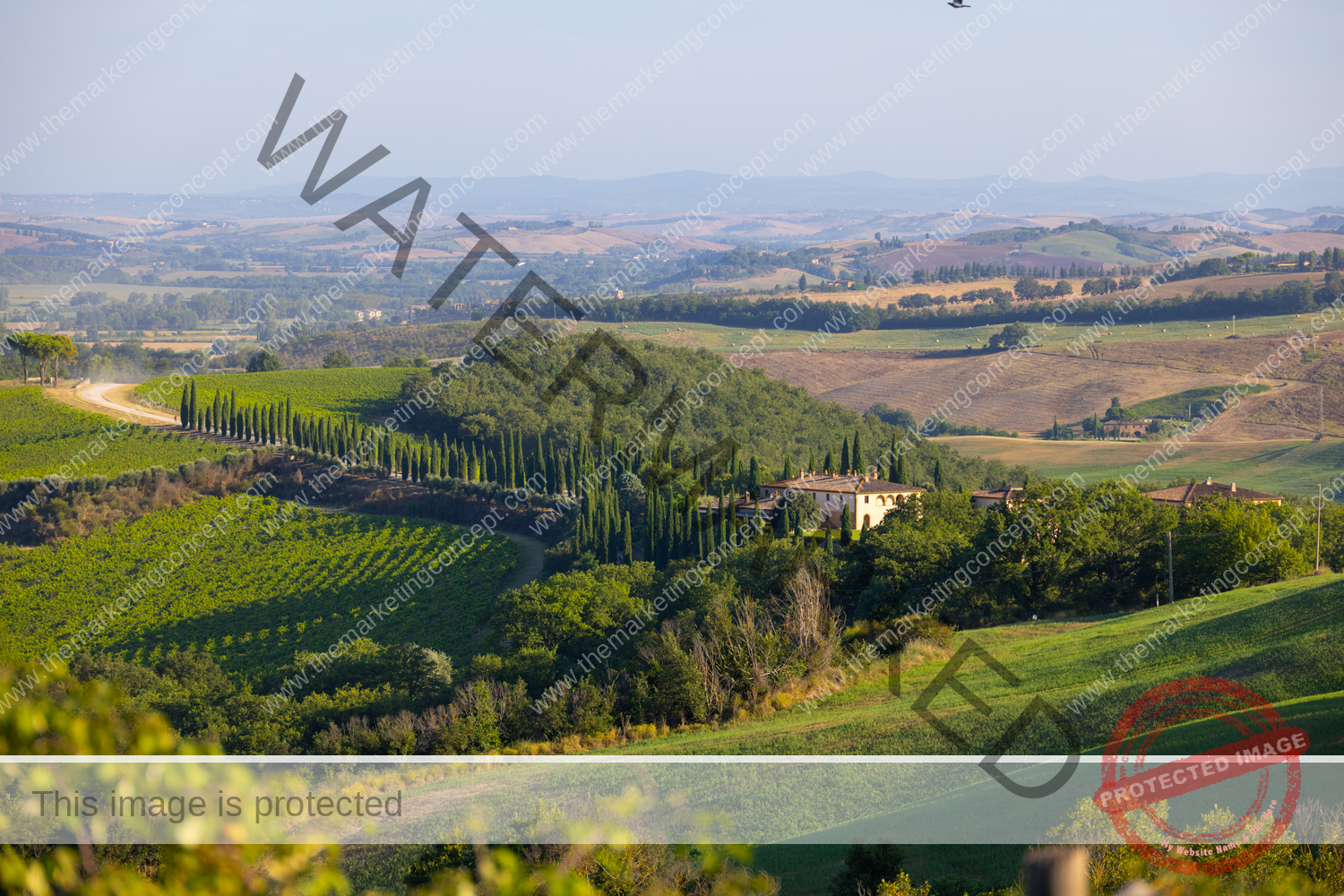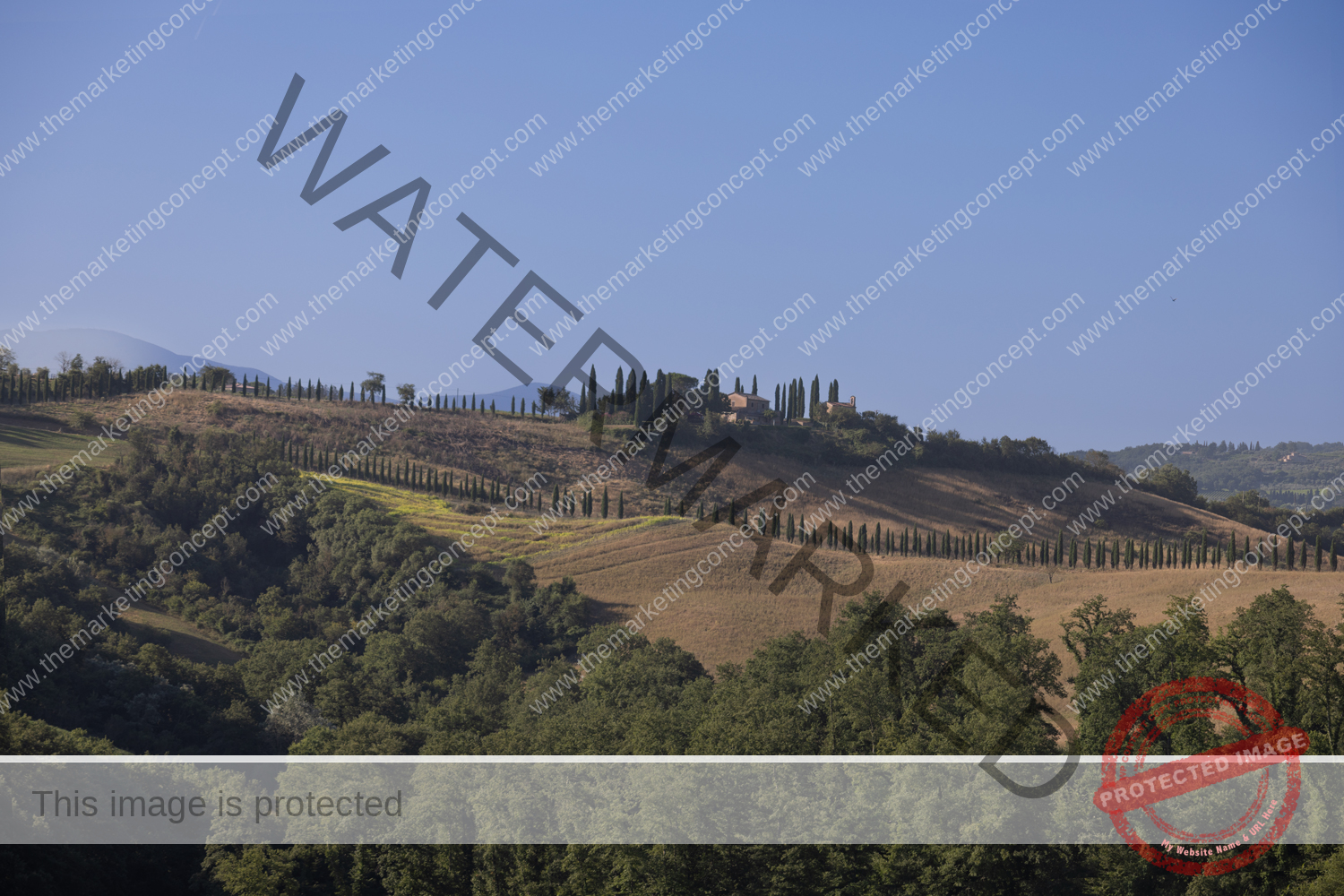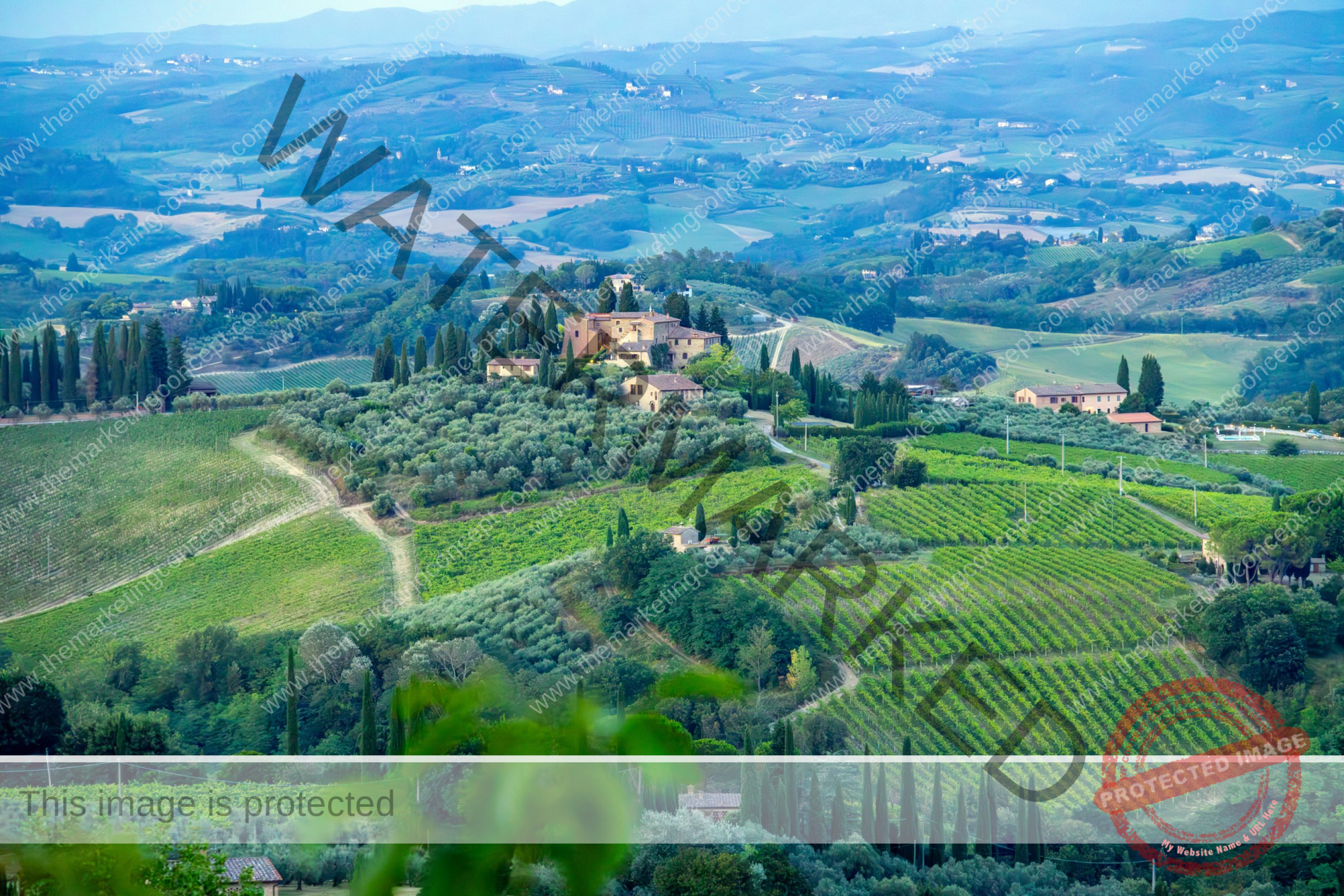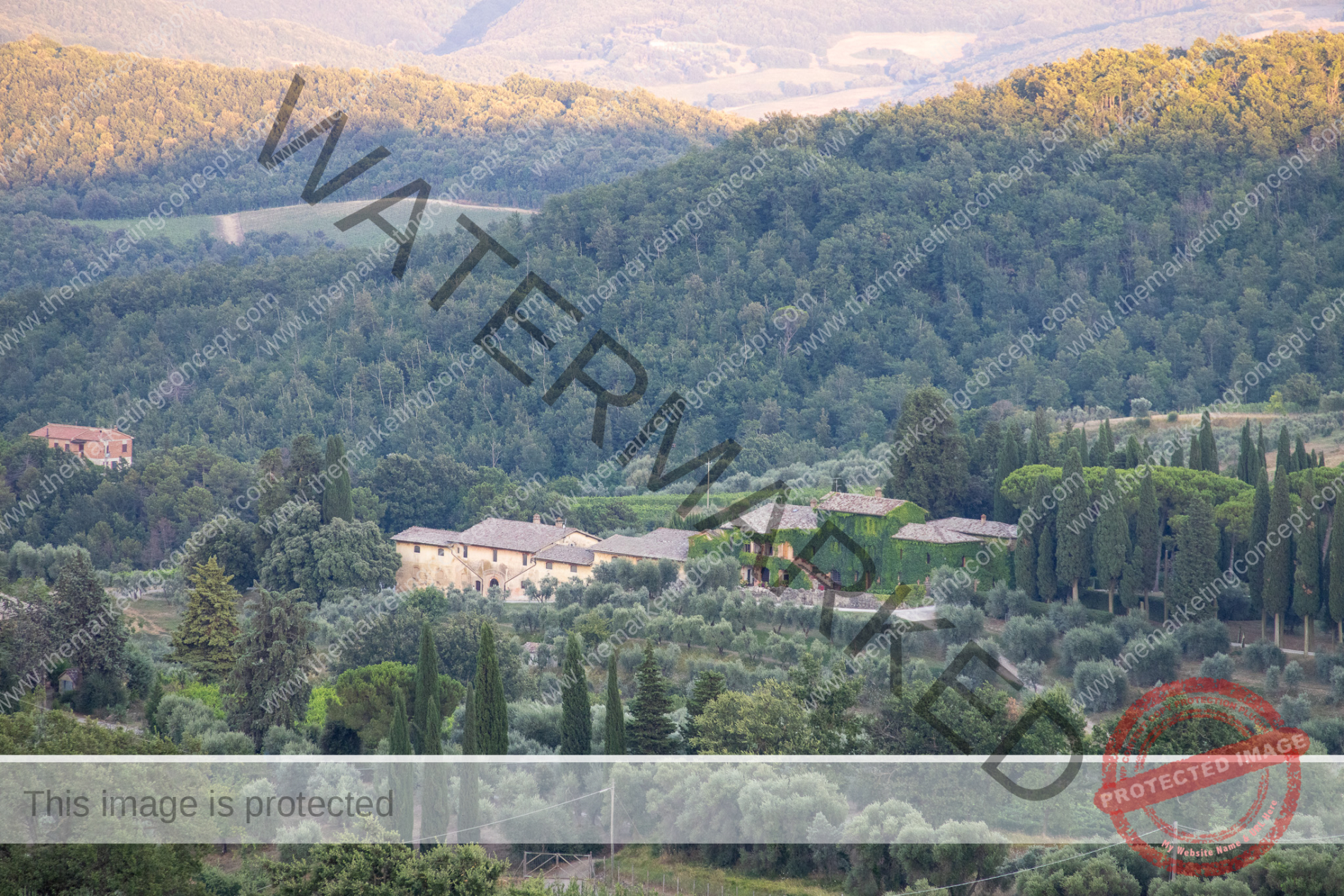
The branding of place is often overlooked
Although brands and branding receive considerable attention – some areas are overlooked. Country of origin is one area that is often overlooked. Let’s discuss 1] how consumers develop country-of-origin brand schemas, 2] when it is appropriate to apply country-of origin [COO] branding, and 3] discuss the branding of the Montalcino wine region.
First let’s briefly discuss brand schemas, brands, branding.
A schema is the result of an innate cognitive process where people attend, interpret, organise, and catagorise information, and consider associations and relationships. Schemas are part of being human; they are mental models that guide feelings, thinking, perceptions, expectations, values, and future behaviour. People collect information and store this information in an associative network for efficient retrieval. Schemas support long-term memory and enable conversations, and future decision-making. Schemas help to manage stress during decision-making. Although schemas are relatively consistent, they evolve with new experiences and information, values-based schemas are generally quite robust; information that is consistent with an existing schema is welcomed, whereas, information that contradicts an existing schema is often discounted, treated with scepticism, or stored for future consideration.
A brand is a person’s attitude to a product or organisation formed through cumulative experiences and observations – people will develop a hierarchy of brand preferences. A brand is also the collective cumulative attitude [i.e., all people] of those who have experienced or observed the product and/or brand. The cumulative attitude to a brand will vary from person to person, generally there will be both positive and negative evaluations and the sum of attitudes will shape future intentions and behaviours. The financial impact of the future intentions and behaviours of all customers is referred to as brand equity. Therefore, enhancing brand equity is a key objective of organisations as it builds the value of the business. Branding encompasses all activities that contribute to how a product, over time, is positioned in the consumers’ mind – this includes all actions intentional and/or unintentional that are performed by an organisation and as such influence brand equity. Many organisations recognise that branding is comprised of short-term and long-term activities – this approach is often referred to the sales-baseline approach where the idea is to build revenue through repeat purchasing and ensure that short-term activities compliment long-term objectives.
Country-of-origin as a brand
Country-of-origin [COO] may initially seem like a simple topic, however, on closer inspection the influence of country-of-origin varies greatly for different countries, products, organisations, and consumers – one thing is certain – there is no ‘one right way’ to promote a product’s country-of-origin.
As a country-of-origin strategy spans many products, brands, and organisations it is often considered as “national branding” (O’Shaughnessy & O’Shaughnessy, 2000, del Percio,2016); others consider it as a “collective brand” (Kohler and Perrino, 2017). It is commonly employed by organisations as a component of their product/brand communication strategy (Aichner, 2014). The effectiveness of a country-of-origin strategy is variable and context specific (Beverland, & Lindgreen, Aichner, 2014, del Percio, Benini, 2018, Utku, 2019) and a number of factors need to be considered, including:
- Countries have different approaches to country-of-origin strategies, factors include
- quality perceptions of the country by overseas consumers
- the type of product/produce [e.g., agriculture]
- the prevailing situational factors and economic objectives
- the degree of nationalism within the country
- prevailing political considerations
- a willingness to allocate the required resources (del Percio, 2016).
- Organisations have different approaches to country-of-origin strategies, factors include
- after conducting a costs V benefits analysis
- employ greater focus when COO is a determinant factor for consumers
- generally, will employ country of origin as a non-dominant message
- include COO as a long-term communication message (Aichner, 2014)
- Consumer schemas are shaped by their “nationality and culture” and influenced by a consumer’s “knowledge, perceptions and stereotypes” Aichner (2014, p.91).
- Consumers will form a hierarchy of country-of-origin schemas for
- the characteristics of the country
- the characteristics of the product
- the characteristics of the customer,
- the customer’s involvement with the product/brand/country (Beverland & Lindgreen, 2002).
Noting the variability of country-of-origin strategies, we explore how country-of-origin is employed as part of the Made in Italy campaign, then explore how this may be employed by exploring Italian wines and in particular wine from the Montalcino region.
Italy as a tourist destination
Italy is, deservedly, one of the top tourist destinations – in 2019, according to The OECD there were 132 million visitors. According to the Agenzia Nationale Del Turismo, visitor numbers halved during 2020/21 COVID period, however, they have quickly rebounded in 2023. Most visitors are from EU countries, USA, UK. Interestingly, the 5th highest source of visitors to Italy are Australians, however, Australians stay the longest of any nationality – on average 25 days, this is likely due to distance and Australian-Italians who visit relatives. As a holiday destination Italy is recognised for a uniqueness in food, wine, landscape, lifestyle, and culture. According to the Ministry of Foreign Affairs and International Cooperation, 70% of UNESCO world heritage sites are in Italy. Benini (2018) described Italy as a large diffused open-air museum. Therefore, tourism is a major employer and contributor to the Italian economy [8.8% Gross Value Added (GVA)].
Italy a leading economy
Perhaps often overlooked is that Italy is more than a museum and a holiday destination. According to the Ministry of Foreign Affairs and International Cooperation, Italy is one of the largest economies with the 4th highest trade surplus [after China, Germany, and Russia], has 24 of the top 100 luxury brands [particularly shoes and clothing], of the top 5000 global products 900 are produced in Italy, Italy is an exemplar for renewable energy, manufacturing efficiency, and raw material processing. Italy is the No1 manufacturer of super yachts, pleasure craft, a leading shipbuilder, a leading automobile manufacturer, is at the forefront of train technology and manufacturing, is world renowned for eyewear, textiles, furniture, and household appliances.
Italy beyond the political chaos
Although some may perceive Italy to be a little chaotic, on closer inspection the economic advancements since the Second World War indicate that this may not be the case and that economic development has been strategically managed – Made in Italy is part of this strategy. As a concept, Made in Italy can be traced back to the Renaissance when people began to think about Italy as a country of style (Paulicilli, 2014). As a brand Made in Italy, expresses the ‘beauty and chic’ to consumers and ‘Italy’s cultural and artistic heritage’ (Paulicelli, 2014, p.156). Benini (2018) maintains that the Made in Italy brand could be considered the 3rd most valuable brand in the world. Made in Italy is not just an expression of country-of-origin it also identifies products with the distinctive qualities of Italian style, taste, and design that are approved to display the ‘Made in Italy’ trademark – compliance is strict, and penalties apply for false claims (Benini, 2018). Made in Italy could be described as a national brand as it conveys a promise of Italian cultural values and the authenticity across all product categories that are totally made in Italy. Made in Italy could also be considered a collective brand as it represents the collective evaluations of all consumers to products identified with this trademark (Kohler and Perrino, 2017). There is a fee to employ the Made in Italy brand and services (Aichner, 2018).
Italy as a collection of distinct regions
However, as Italy is comprised of distinct regions with distinct characteristics, approved Made in Italy products are encouraged to promote that they are produced in a particular region [e.g., Tuscany], and also a particular area within that region [e.g., Montalcino]. According to Benini (2018), the marketing objectives of Made in Italy are to promote a product as part of the Italian national brand plus to promote the uniqueness, quality, and the value of regional products. He argues that there with an increasingly global consumer culture, where global brands are managed as if any product can be made anywhere – regardless of social consequence, brands have become ‘fungible products’[easily substituted]. He highlights that this layered approach, to communicate the style, values, and taste of Italian life through the Made in Italy brand and encourage the distinct, discernible, and desirable regional characteristics is designed to counter the effects/affects of globalisation and minimise the risks of producing fungible stateless products.

The Via Francigena – a pilgrim path to Rome passes through the Montalcino region
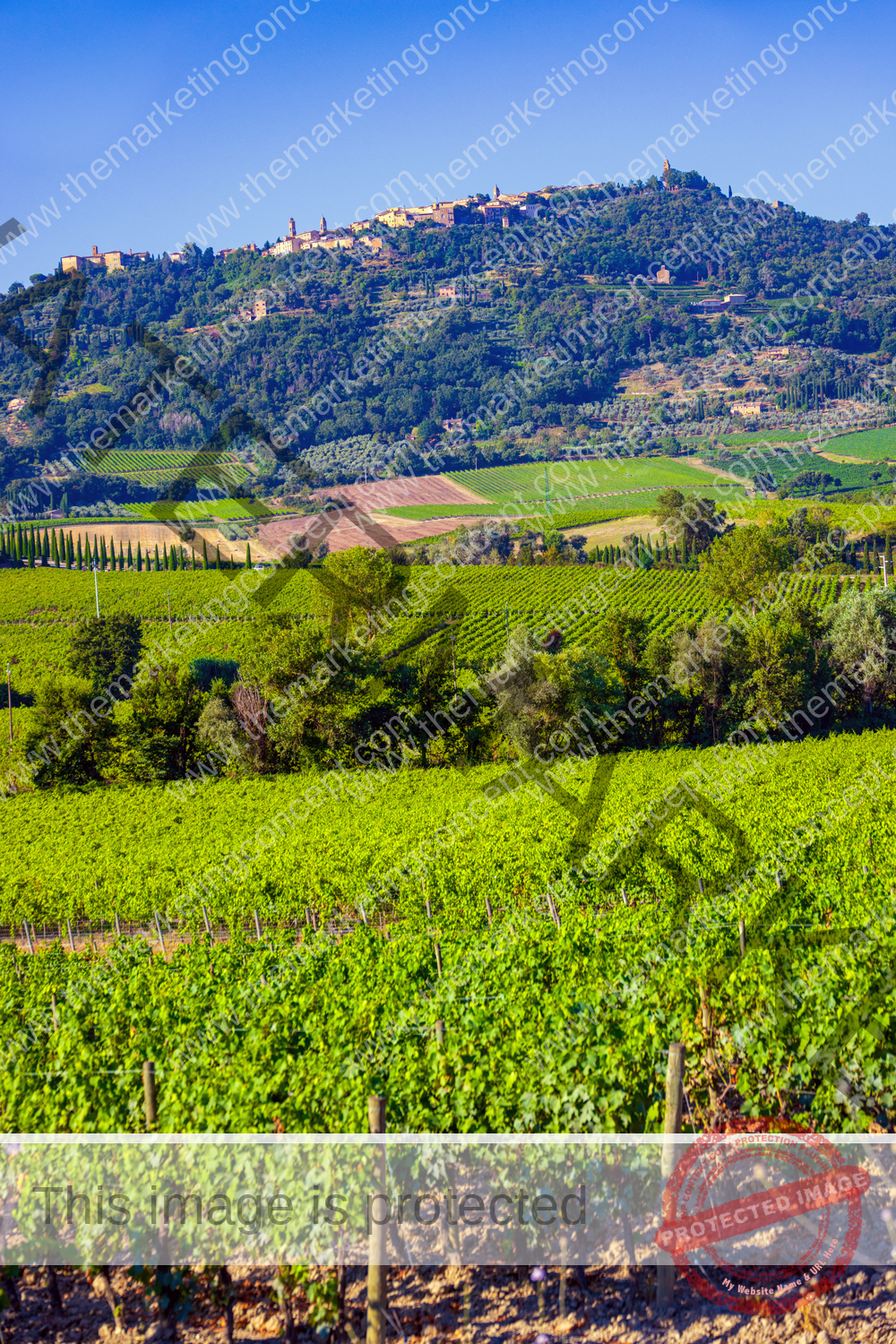
Across the vineyards and olive groves to the hilltop town of Montalcino
Italy is also known for wine
Italy is the largest producer of wine, closely followed by France and Spain and combined they account for 48% of world wine production
This article explores a number of marketing theories including brand schemas, the need to be distinctive, discernible, and desirable and the strategic importance of managing the total product/brand and the aggregate product/brand through the wine from Montalcino.
Montalcino is an enchanting hill-top town in Tuscany, Italy. It has a rich history dating back to Etruscan times. Located on the Via Francigena – a pilgrim paths to Rome and beyond Montalcino has an association with hospitality and tourism since the Middle Ages. The town is relatively small and can be comfortably explored by foot in a few days. Like many Italian hill-top towns Montalcino has experienced the loss of traditional trades and the subsequent economic decline and depopulation, however, in the last 50 years Montalcino has reversed this trend and prospered through collaboration and careful management and why Montalcino has been selected as a marketing exemplar.
The town has multiple levels connected by cobbled streets and alleyways. The buildings are stone with terracotta roofs, a few churches, a walled fortress, an Abbey, a few churches, a few museums, several parks, cafes and restaurants, an assortment of retail stores – including wine merchants, and a compact supermarket. There are more trees, small gardens, and potted plants than expected and observations of buildings, civic pride, maintenance of traditions, resident attitudes, homes, motor cars, dress standards, and appearance, indicate a general feeling of productiveness, optimism, and prosperity.
Within the town there are many vantage points to take-in this patchwork landscape of oak forests, olive groves and orderly vineyards. Such is the uniqueness of this agricultural terroir that it has been recognised as a UNESCO World Heritage Site since 2004.
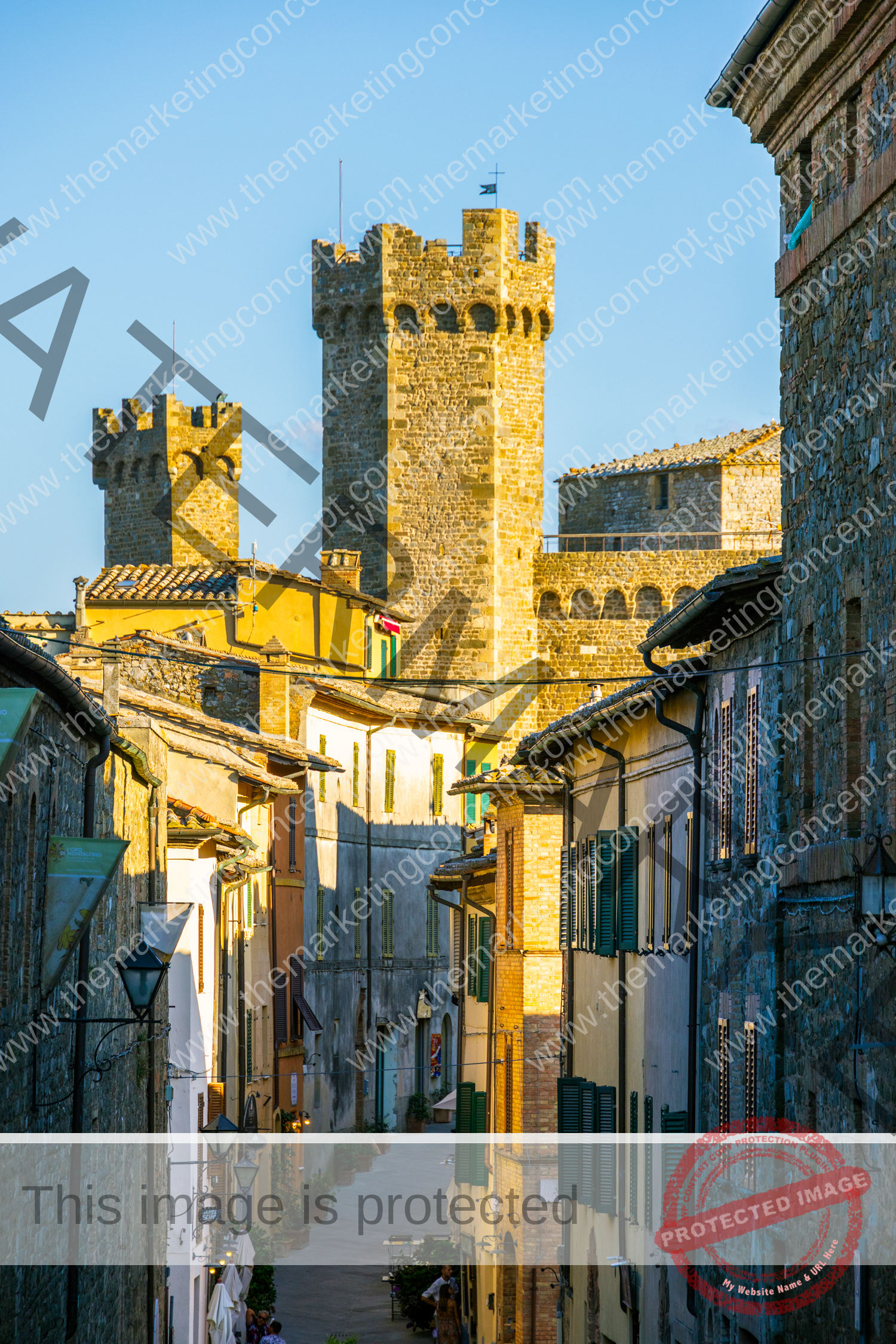
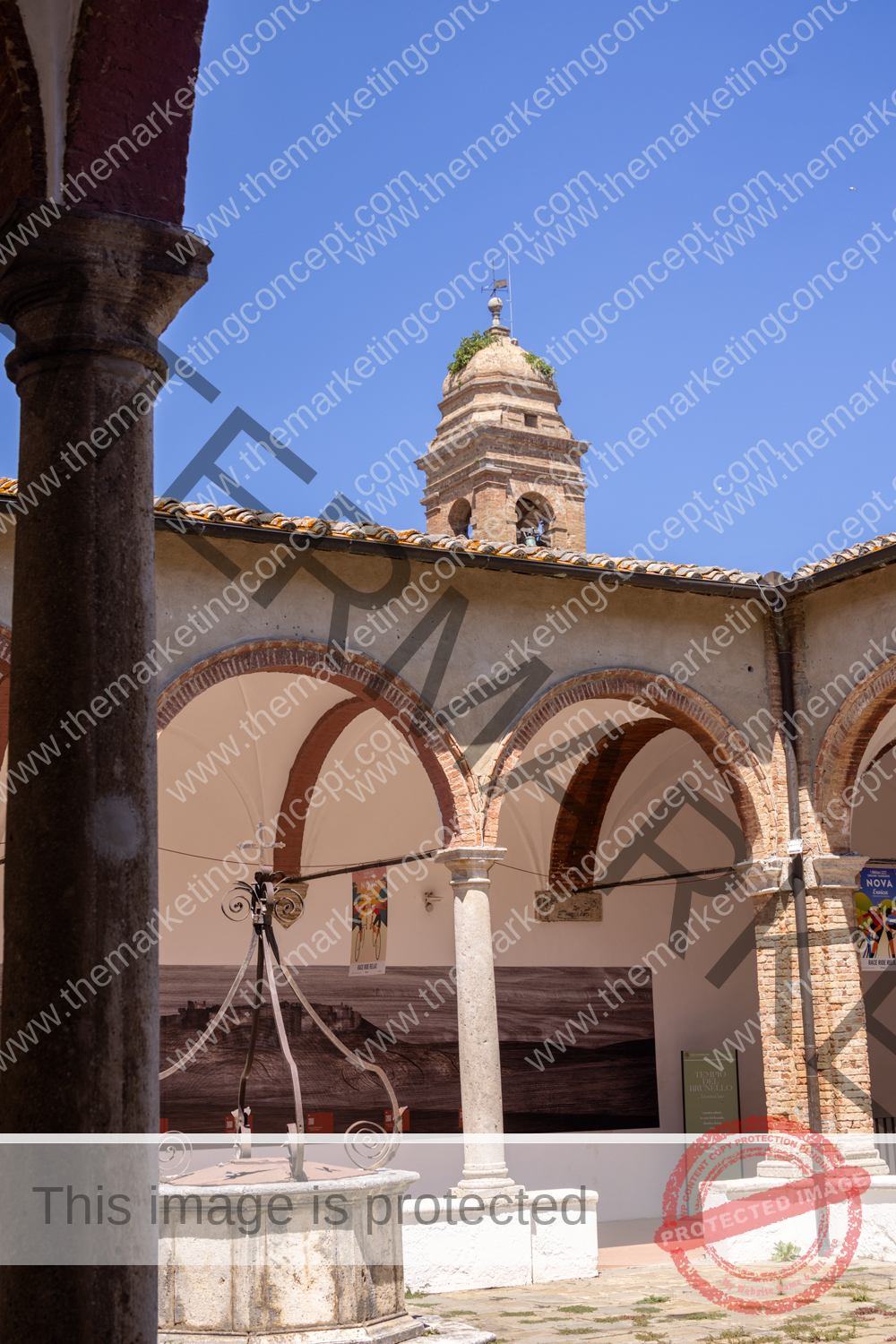
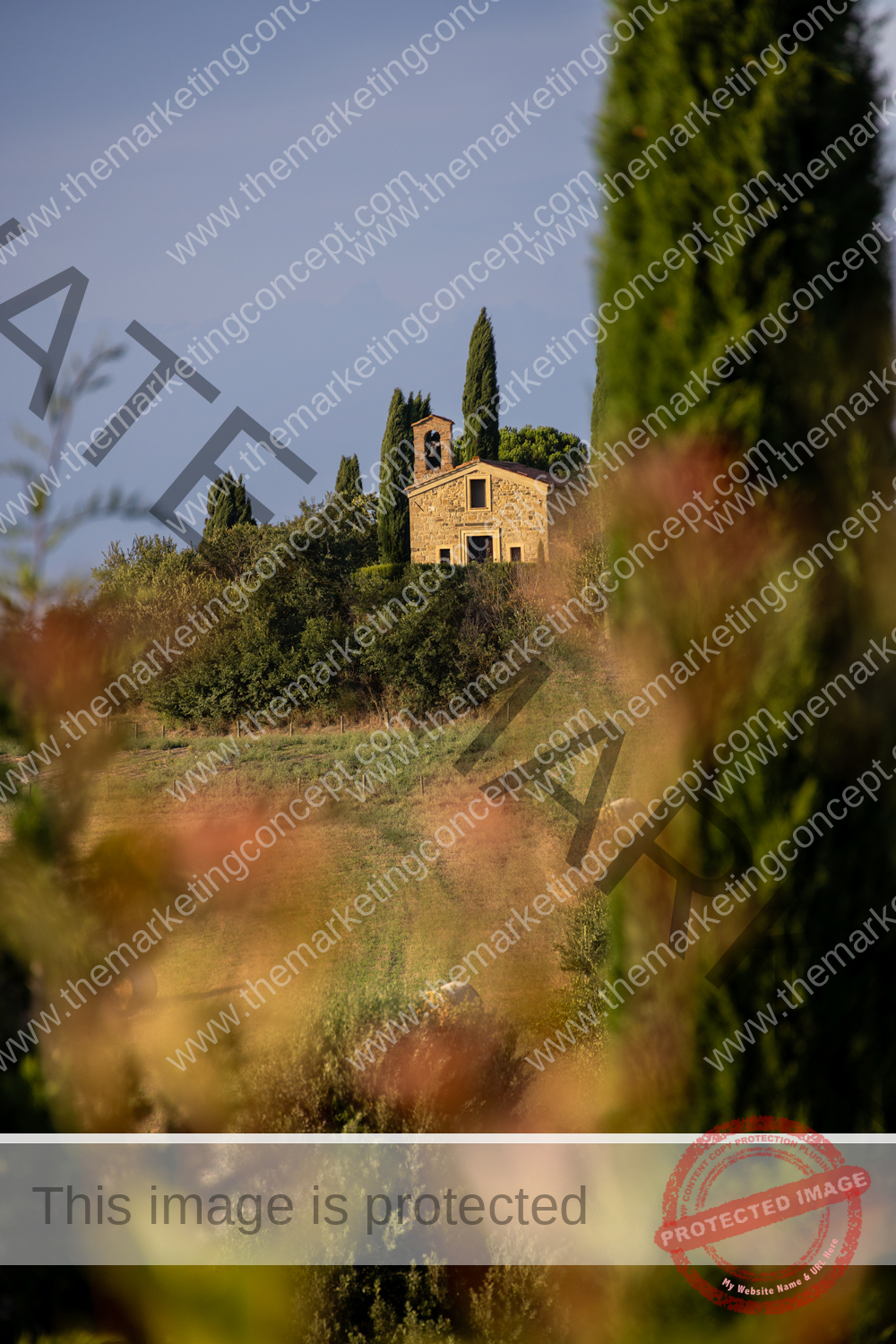
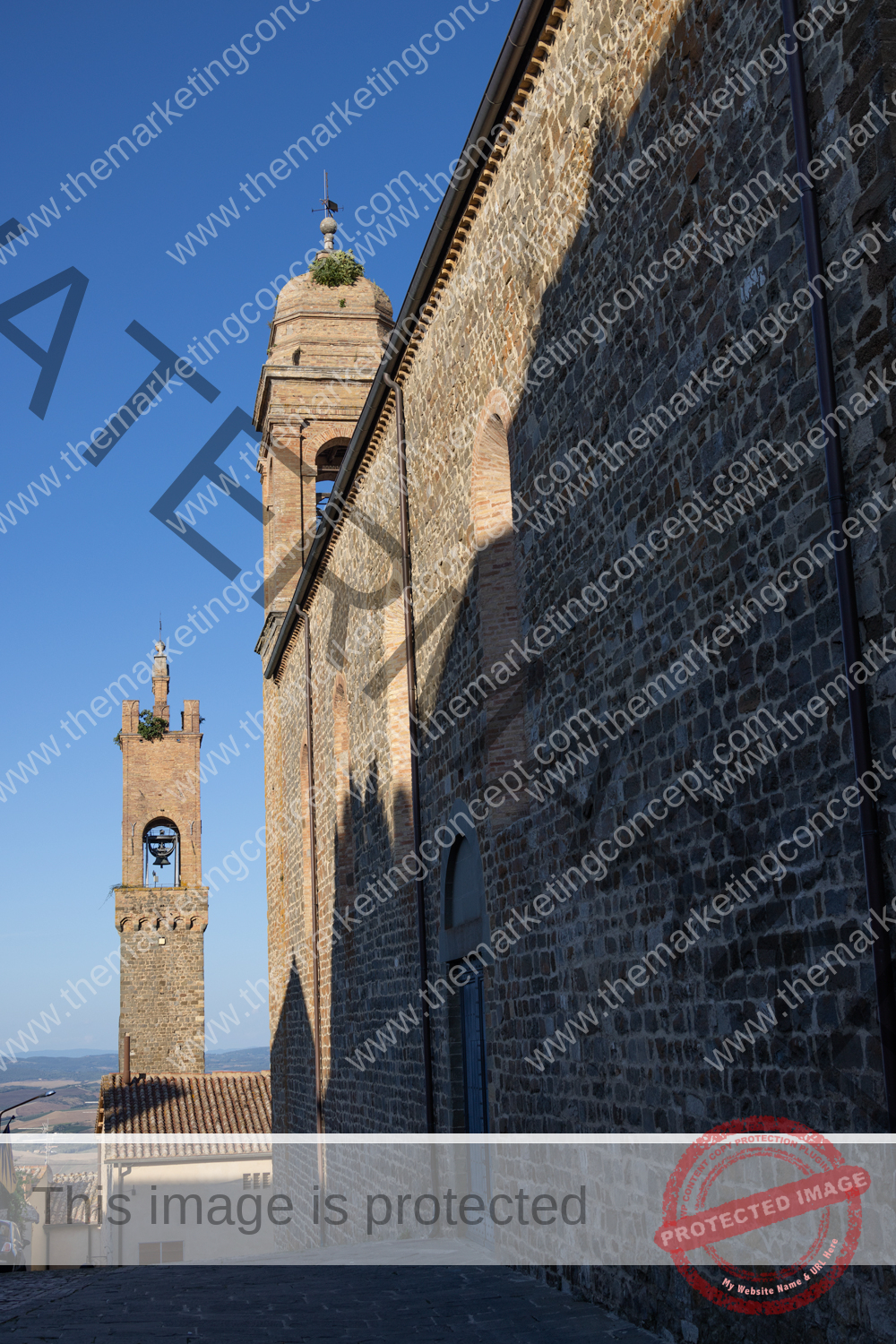
The town of Montalcino is an ancient fortified town
Montalcino is about consuming craftsmanship and passion
For wine lovers, the Montalcino appellation is one of the great wine destinations and every wine collection would be incomplete without wines from this region. Montalcino wines are old world wines with a rich history with folklores that date back to the 14th century; a history that exemplifies the traditions and evolution of the wine industry. Today, Montalcino wines have a reputation for quality, in particular the prestigious Brunello di Montalcino which is internationally recognised as one of the worlds’ great wines. Brunello di Montalcino is an aggregate brand that acts as an umbrella brand for many wine producers and wine brands.
The history of Montalcino wine highlights a strategy focussed on quality rather than quantity, a commitment to established practices, and a tradition of industry collaboration through the Consortium Brunello di Montalcino. In 1967 a 25 member consortium was established, however, with new vineyards membership has grown to over 200 members. Other key events include – the vision of the Biondi-Santi family of wine makers which led to the selection and commitment to produce exceptional wine from a specific cultivar of grape, the ageing of the wine in oak barrels for a specific time, prestige pricing through limited supply and high demand, a commitment and enforcement of quality standards, and the award of DOC quality classification and the higher DOCG quality classification. The wine is often described as an elegant smooth complex wine with hints of ripe berry fruit, chocolate, and leather, however, it is recommended that the wine should be cellared to mature and extract the full flavour.
Behind the scenes the consortium takes an holistic view of marketing; including managing the relationship of the vignerons, training, communications, tasting events, promotions, and maintaining the heritage, traditions, and values of the wines within the aggregate Brunello brand.
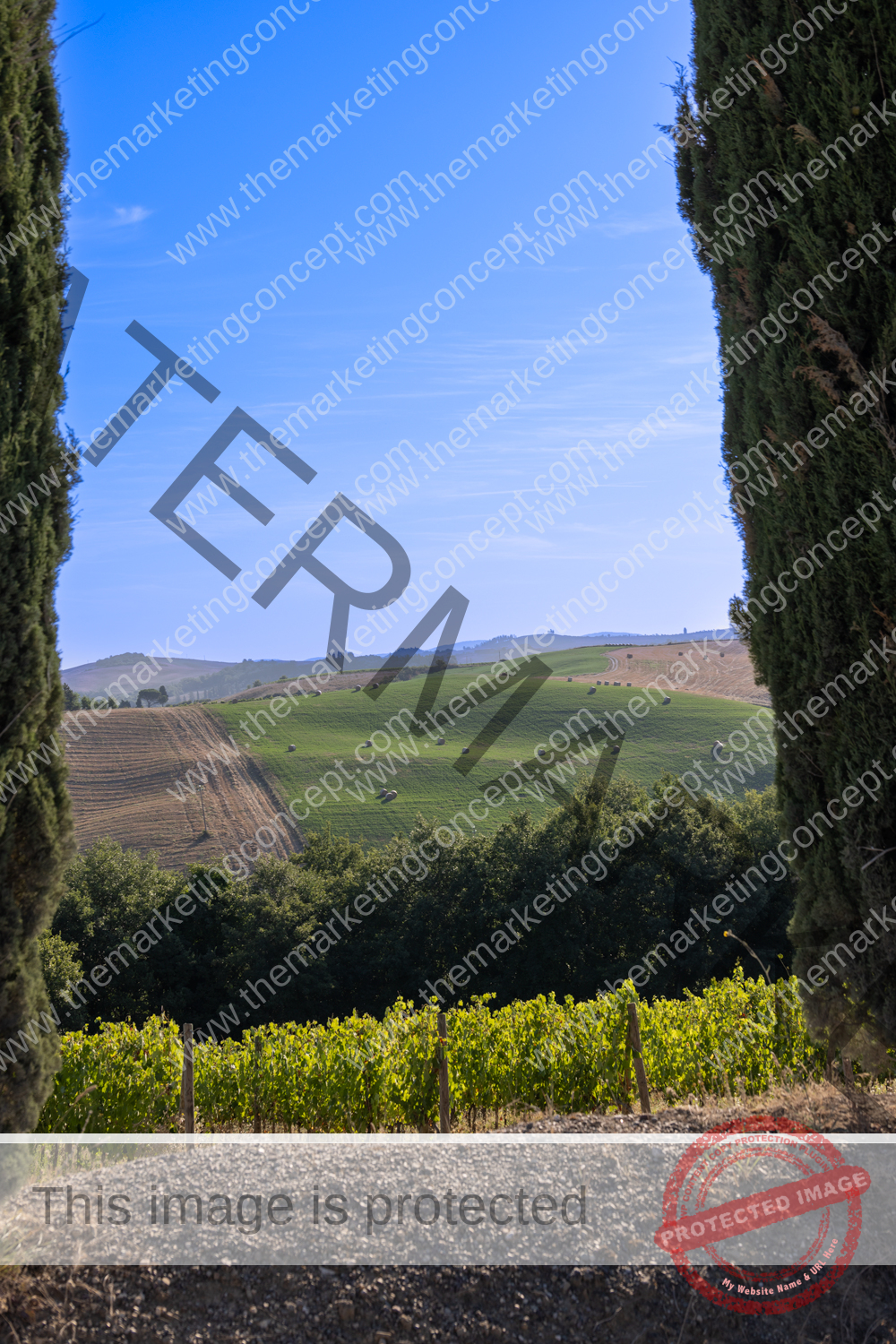
Brunello di Montalcino
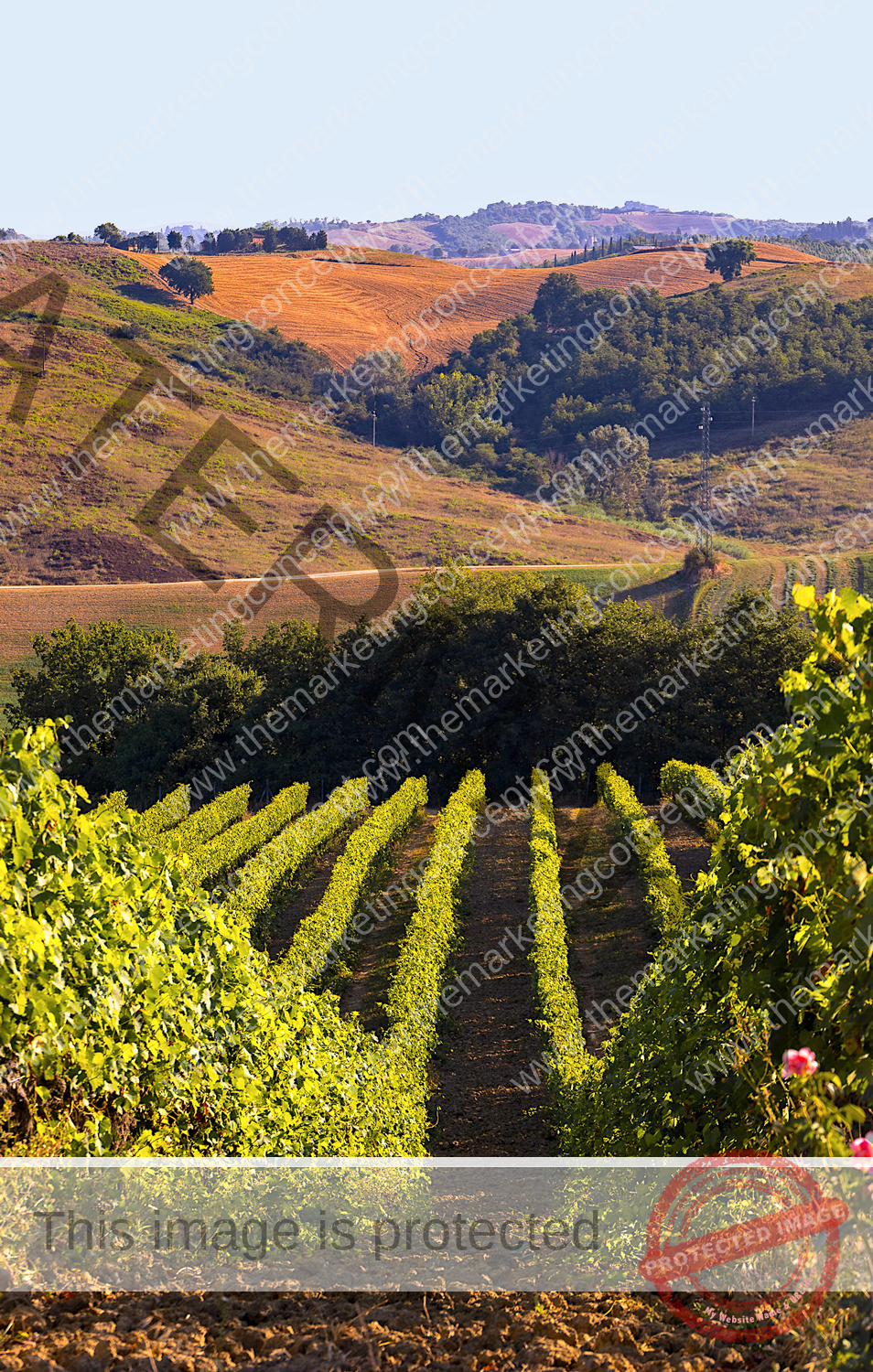
This reputation of Brunello di Montalcino has been carefully nurtured, the wine is made only from a cultivar of Sangiovese grapes – Sangiovese Grosso – a larger berried grape that produces a darker wine – the name Brunello was first employed to ensure that Brunello was distinct and discernible from other wines by communicating the darker or brown [Bruno] colour of the wine.
The Montalcino wine region has a unique terroir suited to Sangiovese vines, including a favourable altitude, a terrain that provides protection from harsh winds, a dry warmer climate with many clear days and when combined with a reflective soil structure enhances the ripening of the fruit. Whilst recognised vinification practices are directed towards consistent wine characteristics, the age of the vines, an undulating terrain, elevation, inclination of the sun, microclimates, and soil variations permit subtle differences in wine styles and therefore appeal to consumer preferences. Given that no two seasons are identical it is interesting [for me as a marketer], that in exceptional vintages a ‘riserva’ Brunello is often released.
On a less optimistic note, climate change concerns were often expressed during my visit to the Montalcino region – with one stating that it is not like we can move our production like a traditional factory. One interesting story [for several reasons] is about a winery that is owned by a woman and the wine is produced entirely by women. The present owner’s mother was an only child and inherited the winery from her ‘father’, this was a time when a woman’s ability to run a winery was questioned, however, her mother ran the winery and also made a major contribution to the Montalcino wine region, today her daughter who carries on this tradition – needless to say this wine is special.
In addition to Brunello, this appellation also produces the more ‘youthful’ Rosso di Montalcino. This dry, fruity, fresh, vivacious, often ready to drink wine is also made from 100% Sangiovese Grosso grapes and is sometimes referred as ‘Baby Brunello’. Russo di Montalcino is aged for a shorter period and with less vinification restrictions. Whilst some newer vineyards and areas are dedicated to the production of Russo di Montalcino, wine originally produced to be a Brunello can be reclassified as Russo di Montalcino if it does not meet a required standard. The quality not quantity strategy is to maintain the quality and prestige of Brunello and also to provide vignerons with a second brand to maximise revenue and cashflow.
Some may purchase Russo di Montalcino for the more attractive price [although it could not be considered a cheap wine] and because it is ready to drink.
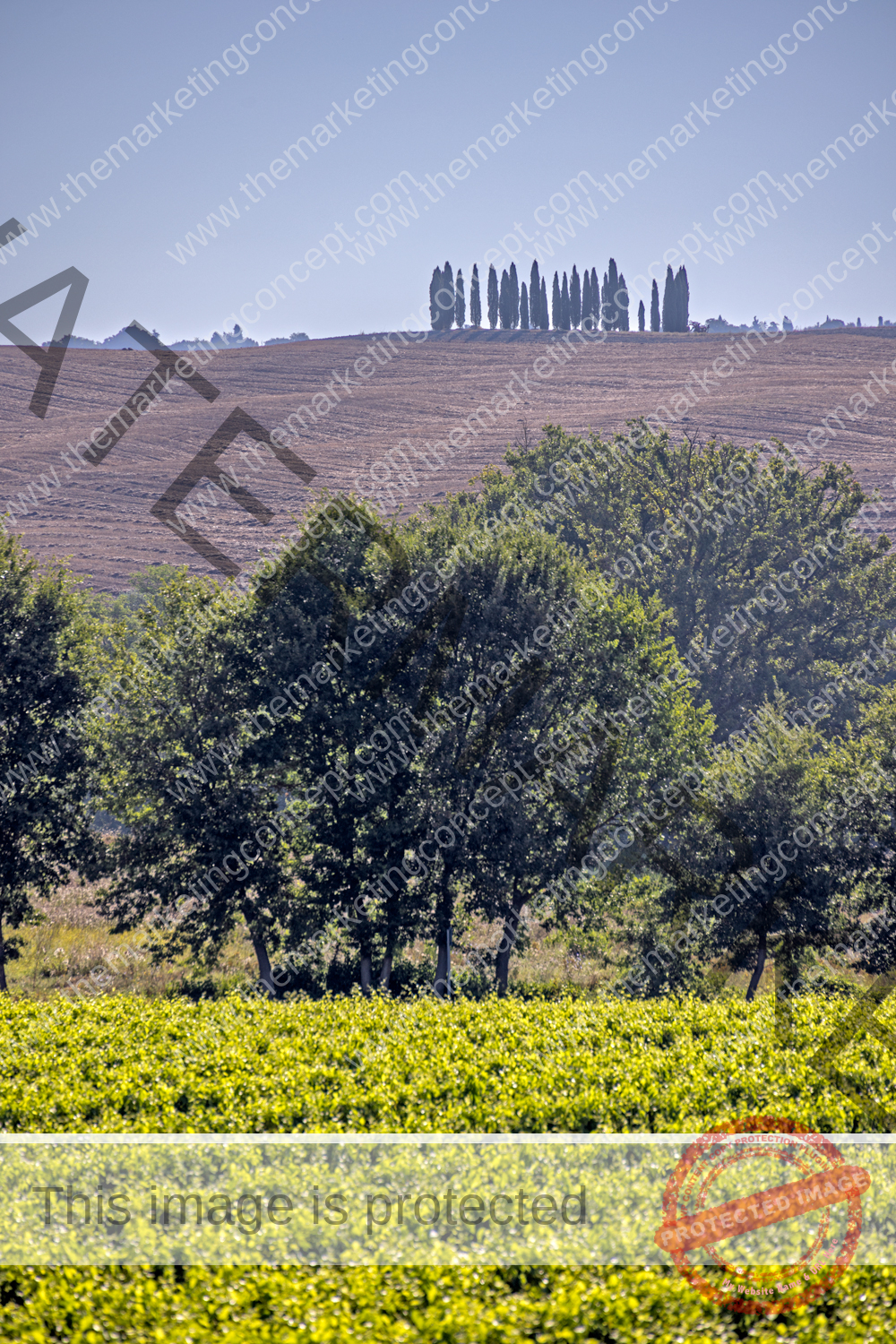

Cantina di Montalcino
Within the consortium is the Cantina di Montalcino a cooperative of 94 small wineries with the objective of better vinification practices and providing marketing effectiveness and efficiencies. The Cantina di Montalcino operates from an impressive building designed to be consistent with the undulating nature of the appellation. A visit to the Cantina di Montalcino reveals a sophisticated market segmentation strategy across multiple pricing points.
The Cantina also provides visitors to Montalcino with peripheral retail services for Brunello and Russo branded products; including stocking a wide range of local wines and shipping services. In addition, wines at different price points are offered including the filling of bulk containers – a service which is ideal for budget conscious local consumers and for local restaurants serving house wines in carafes.
Accomodation
Within the Montalcino region there are a variety of wine and cultural experiences. Many wineries provide accommodation and agritourism experiences. In addition, there are many service providers that offer wine tasting, vineyard tours, the pairing of wine and food, and walks along the pilgrim paths of Montalcino often visiting vineyards along the way.
References
Aichner, T (2014). Country-of-origin marketing: A list of typical strategies with examples. Journal of Brand Management, 21(1), 81–93.
Benini, R. (2018). The Italian style: Economy, Culture and Society. Rome: Nuova Cultura.
Beverland, M.B. and Lindgreen, A. (2002), “Using country-of-origin in strategy: the importance of context and strategic action”, Journal of Brand Management, Vol. 10, No. 2, pp. 147-167.
Kohler, G. & Perrino, S. (2017). Narrating “Made in Italy”:Brand and responsibility in Italian corporations. Narrative Inquiry, 27(1), 187-207.
O’Shaughnessy, J. and O’Shaughnessy, N. J. (2000), Treating the nation as a brand: some neglected issues. Journal of Macromarketing, 20(1), 56-64.
Paulicelli, E. (2014).Fashion: The Culture Economy of Made in Italy. Fashion Practice, 6(2), 155–174.
Utku, D. (2019)The Italian Style – Workshop. University of Rome.



